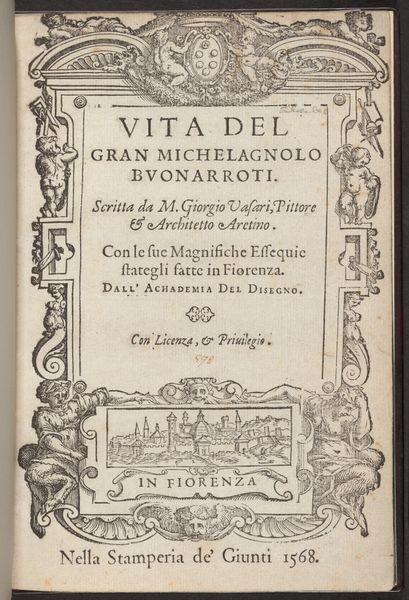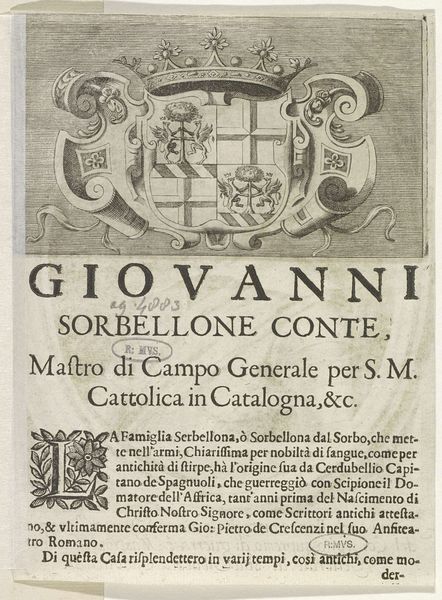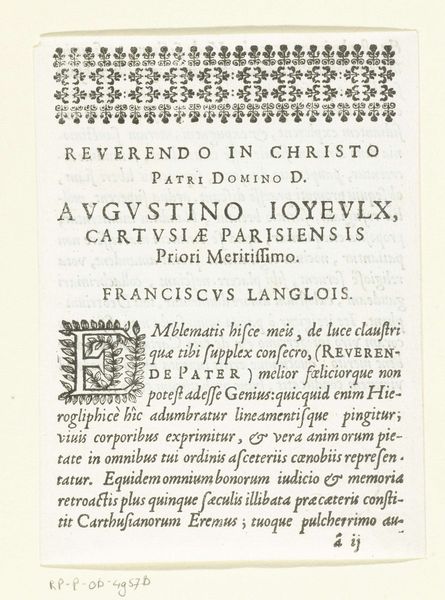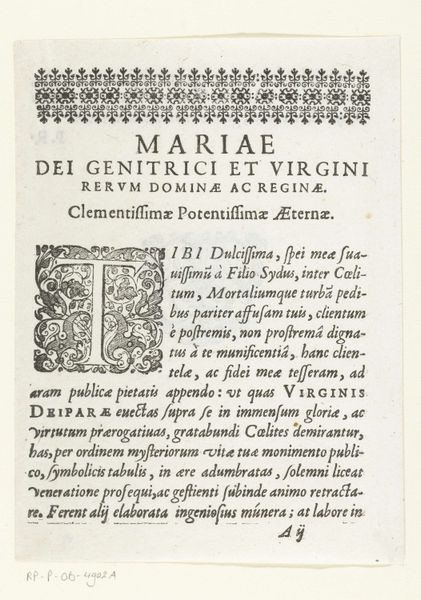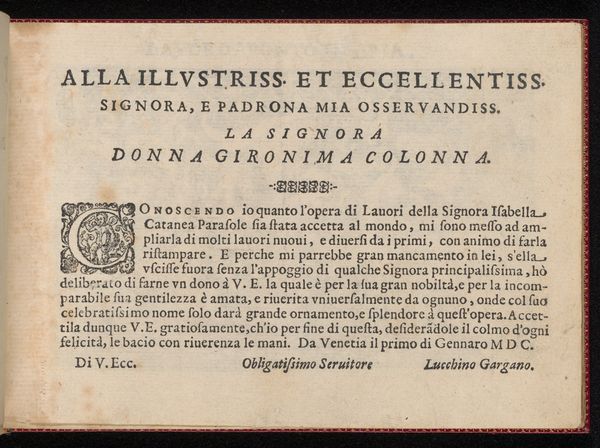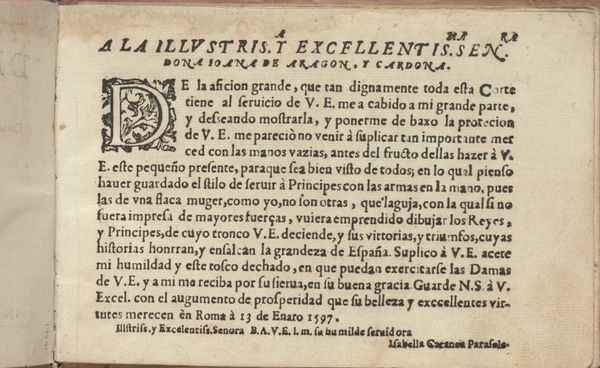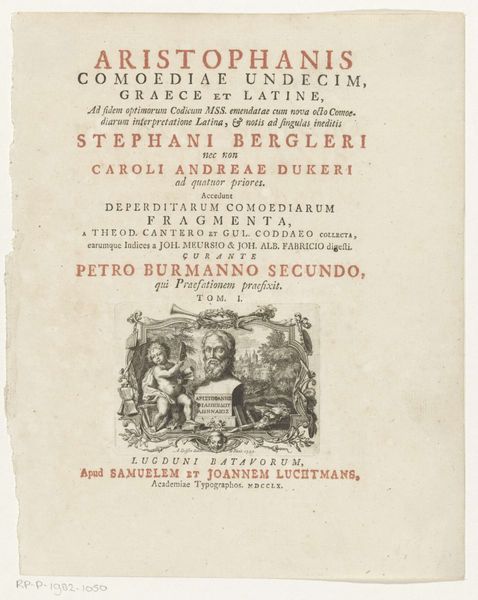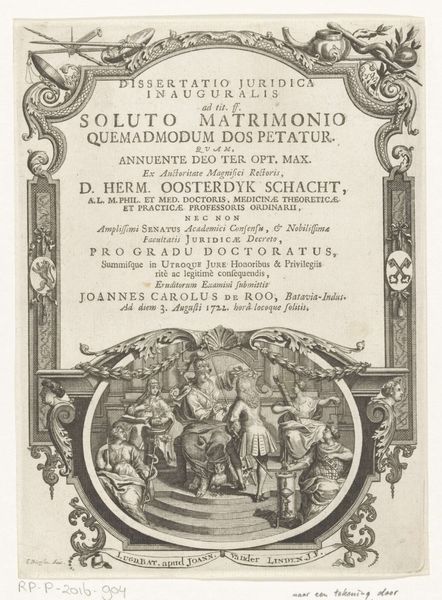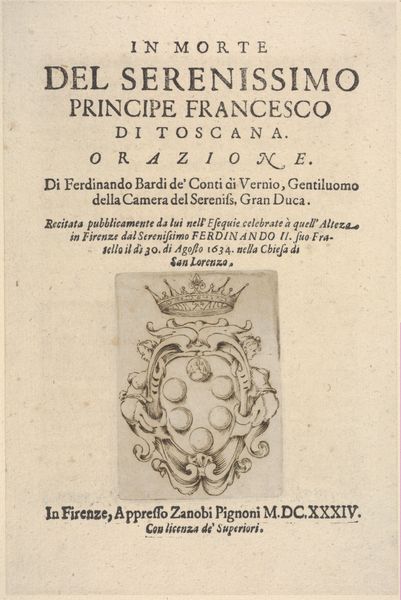
graphic-art, print, typography, engraving
#
portrait
#
graphic-art
# print
#
typography
#
italian-renaissance
#
engraving
Dimensions: height 210 mm, width 145 mm
Copyright: Rijks Museum: Open Domain
Curator: Here we have a title page, dated 1642, created by Filippo Ghisolfi. The print is an engraving featuring typography and some rather delicate floral details. What are your first thoughts on this example of graphic art? Editor: It feels very formal, doesn't it? Stately even, but then the roses add this almost fragile touch, softening the declaration within the text itself. You can almost feel the handmade nature of each impression; no two could be quite alike. Curator: Indeed. As the title suggests, the page introduces a book about the lives of the Dukes and Duchesses of Milan. Ghisolfi, working in Milan, crafted this for Antonio Campo's historical work, highlighting the cultural significance attached to nobility at the time. The book itself positions them in a grand historical narrative. Editor: Looking at the arrangement, the hierarchy of text jumps out. Each line size emphasizes certain phrases or names, doesn't it? The artist’s name—Campo, that is—sits centrally, giving credit where it’s due for his work. The roses look so much fresher when read as symbols of a new artisanal work and a certain revival in printing. Curator: Exactly! This was produced during the Italian Renaissance. Printing advancements were tied directly to powerful families and figures. Ghisolfi benefitted in his career by fulfilling commissions such as these. The very act of typography elevates and publicizes his talent as an engraver in service of Campo's scholarship. Editor: Thinking about labor and tools—imagine cutting each line of type and each individual rose petal by hand. This wasn’t just design; it was physically demanding production, a material process linking directly to access and audience. It really calls attention to the socio-economic conditions in which this was crafted. Curator: An excellent point. By securing the "licenza de' superiori," as the inscription states, they legitimized the publication, navigated censorship laws, and ensured it would circulate within permissible socio-political bounds. Editor: When you frame it this way, one has to reconsider who benefitted. Yes, patrons were lifted by their publications, but so, too, was Ghisolfi empowered by the entire making process and its potential distribution networks, each title page a small act of social mobility through artistic talent. Curator: A powerful observation. It underscores that even seemingly simple title pages like this serve as invaluable material witnesses to artistic ambition in times of historical complexity. Editor: Absolutely, an economy of artistic talent shaping the narrative of power.
Comments
No comments
Be the first to comment and join the conversation on the ultimate creative platform.
